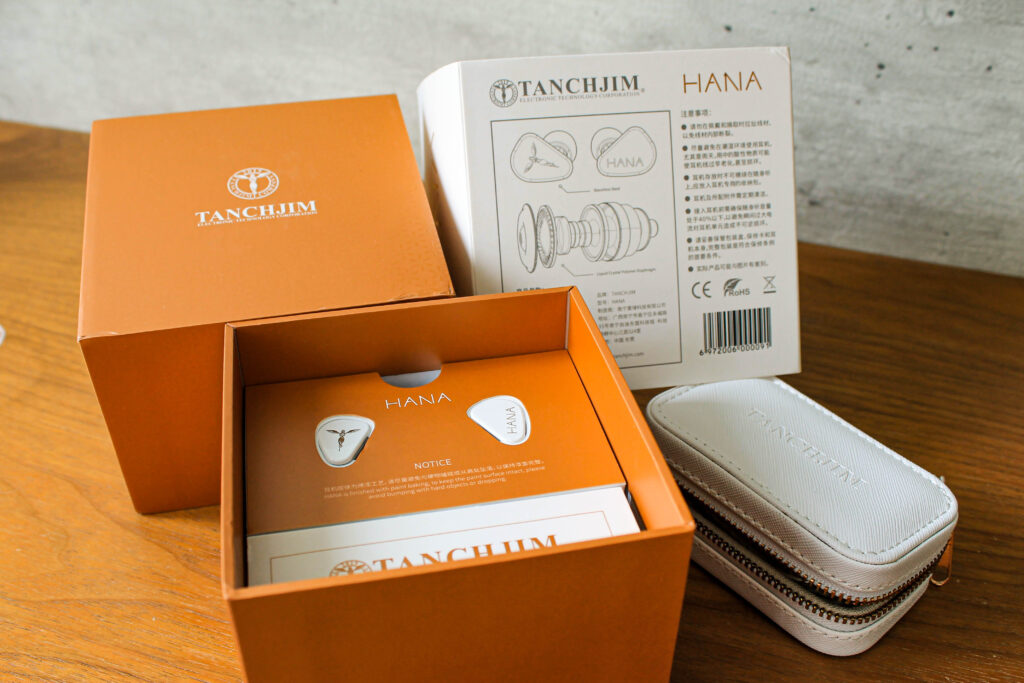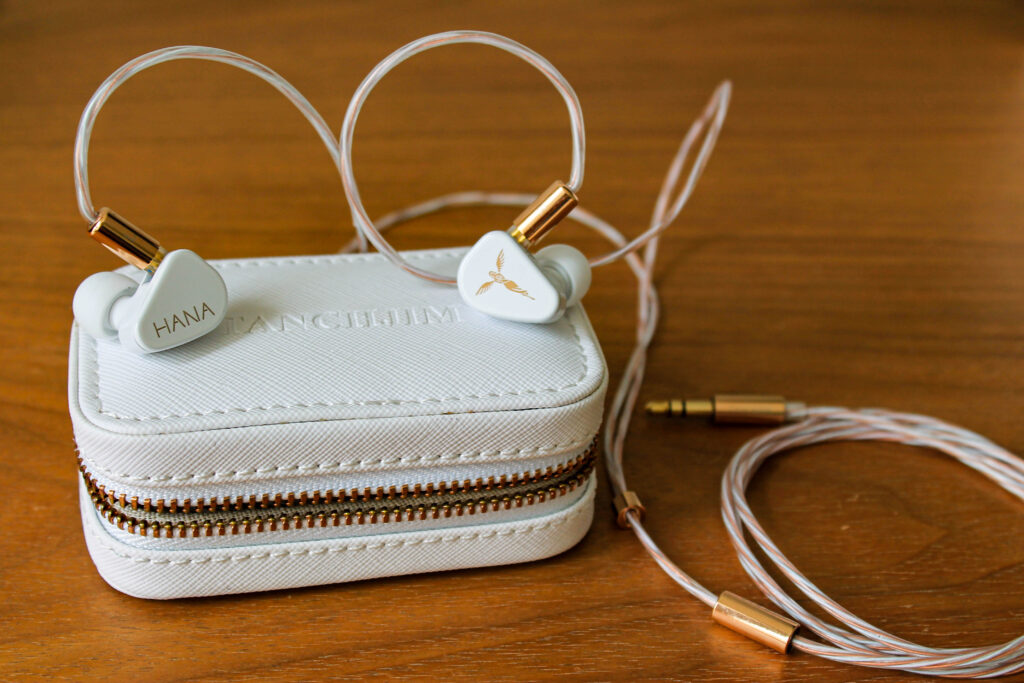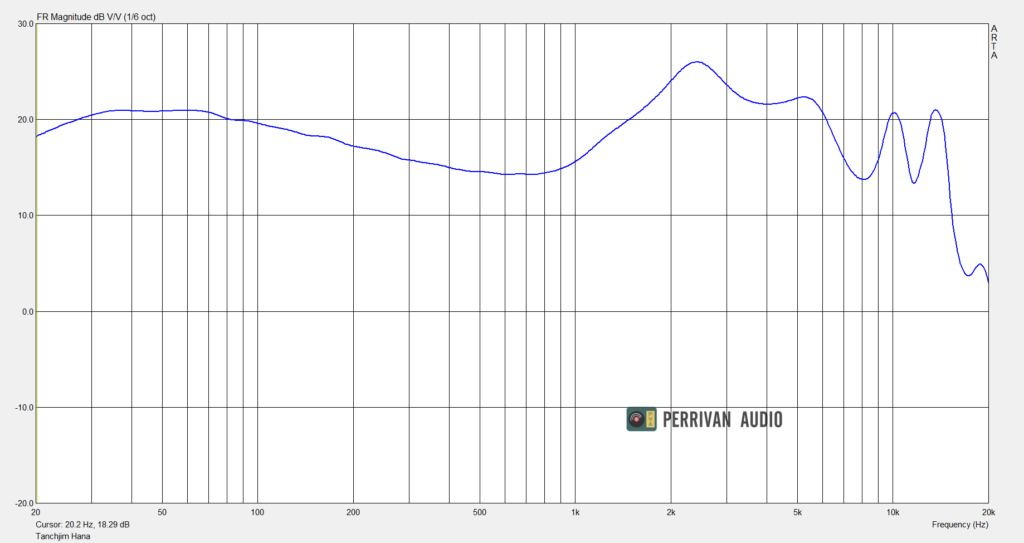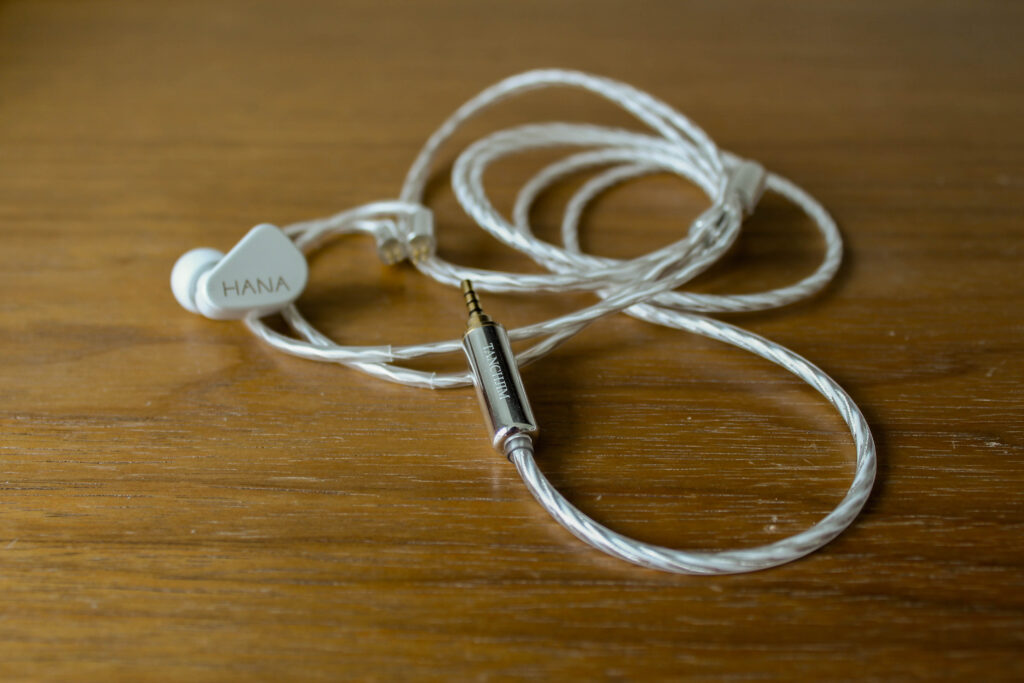Updated: Nov 19, 2020
Pros: Build Quality, Detail retrieval and separation, Impressive transparency in mids, Treble extension, Refined Bass, Soundstage and Imaging
Cons: Fit! (short nozzle), The detailed and energetic sound may be tiring for longer listening sessions
Driver Setup: 1DD (single liquid crystal polymer dynamic driver)
Price: $160 (USD)
Intro
Disclaimer: This review set is a demo set graciously lent to me by Daniel at Oardio and the review is written of my own accord and all thoughts are my own. The Hana is available for purchase from Oardio through their website should you find yourself interested in a pair.
This is a review of the Tanchjim Hana IEMs. Tanchjim made a name for themselves through the success of their earlier flagship, the Oxygen, a well-tuned single dynamic driver. This time, Tanchjim attempts at designing another similarly spec-ed IEM with a different tuning. Appearance-wise, it looks like the Oxygen with a paint job. Coming in at an SRP of $225 (SGD), it exists in a different price bracket from the Oxygen and we shall see how the Hana fares.
This is a fairly long review, and if you’re short on time, jump straight to the Conclusion for the final verdict.
Accessories and Build Quality (Score: 9/10)

The Tanchjim comes in a cube-shaped packaging, and everything shares the colour theme of the earpieces themselves. Unboxing was quite a premium and enjoyable experience. Tanchjim is also pretty generous with the tips, providing 2 sets, one for vocals and one for bass. Included is also a luxurious white zip case. This has all the vibes of a branded leather pouch, furnished with a rose gold zip. The included cable for the Hana is also following the white and rose gold aesthetic, something I quite thoughtful. The entire unboxing experience made me feel like I was unboxing a piece of fashion accessory or jewellery. Some may find the overall look a little on the feminine side but there’s no denying that these are gorgeous.
For the Build Quality, the earpieces themselves are made from Stainless Steel and have significant weight to them. These should be relatively tanky and not have any issues with them failing. The stainless-steel body is coated with white paint, which Tanchjim has included a statement in the box requesting users to be careful to not bump them into hard objects or they may chip. These may be an issue in the future just as in the Moondrop Starfield where paint chips may mar the overall appearance.
Fit (Score: 7/10)

I gave the fit a separate section this time as I felt it was a potentially divisive issue. The Hana shares the same overall shape as the Oxygen, which gained notoriety for its fit. The Hana has a relatively short nozzle which makes it hard to get a snug fit in the ear canal. This can be solved by tip rolling, with perhaps a pair of Spinfits or some tips with a longer barrel. The greatest problem for me is how the centre of gravity of the earpieces tends to cause the earphones to fall out, especially since they are so heavy.
Another minor problem with the fit is that the cable ear guides are a little loosely shaped and don’t always stay securely over my ears. This is usually remedied through the use of the chin slider but the one on the stock cable doesn’t seem to work.
Sound (Score: 8.2/10)

Frequency Response of the Hana
Sources Used
- Hiby R5
- Hiby R6
Albums and Tracks tested with
- Grease Soundtrack
- Gryffin – Gravity
- Michael Bublé – To Be Loved
- Greenday – American Idiot
- Fall Out Boy – Save Rock and Roll
- Ragtime Broadway Recording
- Taylor Swift – Red
Bass (Score: 8.5/10)
Bass on the Tanchjim Hana is no slouch. It has a decent depth and the sub-bass extension is also quite good, providing a satisfying rumble when called upon to deliver. On “We Go Together” of the Grease Soundtrack, the moving bassline is very punchy and detailed. The bass helps keep the sound very lively and enjoyable, good for critical listening without getting too boring or cold.
Listening to some EDM such as tracks from Gryffin, the bass offers punchy beats with a relatively fast decay. Complicated rhythms come out really enjoyably without bleeding or overpowering the mids.
Mids (Score: 8/10)
Moving on to the mids, these are not too recessed despite the mild V-shaped tuning and still retain their own space to shine. Lower mids can come across as a little sterile – Gives a sense of cleanliness (reduced muddiness) but also creates a little bit of a void.
The mids are very well-textured in the vocals. Although I would have preferred more warmth and body in the male vocals, it wasn’t too much of a problem but more of a preference. Once again like the bass, there is detail-oriented sound and the mids have a rather dry texture. This can be quite unforgiving to bad recordings and make them a hard listen, but at the same time, bringing out the best of good recordings. Female vocals are noticeably forward and significantly more powerful. On Ragtime Musical’s “Sarah Brown Eyes“, a male and female vocal duet, they both sounded crystal clear and authoritative without ever really getting shouty.
Instrumental-wise, on Michael Bublé’s rendition of “Mack the Knife”, the trumpets are quite forward, at times a little overly forward and unnatural, throwing the balance of instrumentals and vocals a little off.
Treble (Score: 8/10)
The treble is very well-done with terrific extension, although its flavour may not suit everyone’s tastes. There is no sibilance but is very detail-oriented and can get fatiguing. There is quite a bit of sparkle in the upper end, at times a little too much even. Although the treble is audibly “good quality” treble and not tinny, it’s a little too pronounced and unsustainable for longer listening sessions. That being said, treble heads may appreciate this quality of the Hana.
In Taylor Swift’s “All Too Well”, the crashes are a little bit too much and too forward, would be better if more pushed back. It was bordering on being painful and I found myself turning the volume down occasionally.
Overall Sound
The Hana has quite an impressive soundstage and combined with its accurate imaging, (e.g. Greenday’s Give Me Novocaine intro), provides an engaging and immersive listening experience. This solidifies Hana’s capabilities as one primed for critical listening.
Comparisons
Vs TinHiFi T2 Plus (review here)

The tuning on the Hana is reminiscent of the T2 plus. However, I would consider the Hana as an upgrade in sound over the T2 plus in most aspects. The Hana has better detail retrieval and a more palatable presentation as compared to the more aggressive tuning on the T2 plus. The treble is less excitable on the Hana by a little, and I find that I am able to enjoy longer listening sessions than I did with the T2 plus.
However, the fit on the t2 plus is much better than the Hana, mostly because the Hana fit just doesn’t work well with my ears. Once again, the fit is subjective, and your experience may vary. If the fit is important to you, I suggest finding somewhere you can demo the fit of the Hanas.
Overall, do keep in mind the price tag of the Hana is more than 3 times that of the T2 plus, and just to manage expectations, don’t expect 3 times the sonic improvement, but yes I can attest to a significant step up in sound.
Vs Moondrop KXXS (review here)

There were many initial comparisons made between the KXXS and Oxygen, although the Oxygen was less talked about due to its significantly higher price tag, making it less accessible to the masses. However, the Hana shakes things up with the price tag of $225, making it now cheaper than the KXXS.
Once again, I prefer the fit on the KXXS as it has a longer nozzle to give that secure fit. The Harmanish tuning on the KXXS is much more laid back than the Hana and this becomes a throw up between the two depending on your preference.
Personally, I would pick the KXXS over the Hana as it still has rather impressive detail retrieval, with more warmth and a musical twist to things. To date, I still find myself whipping out my KXXS for longer listening sessions at my desk just because of how easy-going it sounds. I would go out on a limb to say that most people would have preferences that lie closer to the KXXS and the Hana.
Tanchjim Cable S Upgrade Cable

Tanchjim also sells a balanced 2.5mm upgrade cable called the Tanchjim Cable S that can be paired with the Hana for $99.90 (SGD). It is made from a mix of silver-plated oxygen-free copper (OFC) and silver alloy.
Build wise it is really aesthetically pleasing as the entire length of the cable is sleeved. The finish on its connectors and splits are done really well with that polished silver look and weight gives off an element of “elegance”. This definitely is on the pricier end and
Sonic effects
Although I cannot isolate the effects of materials versus connection type, there are definitely some changes to the sound especially in the bass region where notes and hits feel more articulated as compared to the stock cable. This may very much be attributed to the change in power moving from single-ended to balanced. Overall, if you feel like keeping up the luxurious aesthetic of the Hana and are looking for a balanced cable, perhaps the Cable S may interest you.
Conclusion
The Tanchjim Hana was quite enjoyable but borders between the verdicts of “not bad” and “great”, owing to seemingly insignificant issues but ultimately deal-breakers such as the fit. One would have thought Tanchjim would have learnt its lesson and pay more attention to consumers after the reception and feedback from the Oxygen. However, giving credit where it’s due, the Tanchjim Hana provides a good combination of beauty and technicalities as it strikes a balance between musical and analytical, making for an enjoyable sound signature.
I think it’s important to emphasise that the Hana is not a cheaper Oxygen despite their similarity in construction. They both have very different tunings and exist in 2 different price brackets. In no way did I find that the Hana would displace the Oxygen. This was an attempt to create an IEM with a different tuning.
If you find yourself in search of something for critical listening, there are a few IEMs that perform as well as the Hana in this price range. The Hana manages to maintain its detail-oriented sound whilst keeping things interesting with its fast and punchy bass. It is quite intense in its presentation and forward in the vocals, which some may definitely find too tiring, especially if you’re more used to Harman-ish tunings from IEMs such as the Oxygen. However, its lack of versatility is what stops it short of greatness for me. It shines in a selection of songs and borderlines on being a little too shouty or intense in others.
Click HERE for our grading list for earphones
